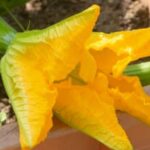Introduction:
Insect netting is an essential tool for any vegetable gardener. It serves as a protective barrier against common insect pests, ensuring the health and productivity of your garden. By incorporating insect netting into your gardening routine, you can create an environment that promotes the growth of healthy and pest-free vegetables.
Vegetable gardens are particularly vulnerable to a wide range of insect pests that can wreak havoc on your plants. Common pests such as aphids, caterpillars, and beetles can quickly infest your garden and cause significant damage. These insects feed on the leaves, stems, and fruits of your vegetables, leading to stunted growth, diseases, and even plant death.
Using insect netting in your vegetable garden offers numerous benefits. Firstly, it provides a physical barrier that prevents these unwanted pests from reaching your plants. The fine mesh allows sunlight, water, and air to pass through while effectively keeping insects out. This not only protects your crops but also reduces the need for chemical pesticides or insecticides.
Additionally, insect netting helps maintain a more favorable growing environment for your vegetables. It acts as a shield against extreme weather conditions like strong winds or heavy rains that can harm delicate plants. Moreover, by creating a microclimate around your crops, it regulates temperature and humidity levels within the garden bed to promote optimal growth.
Overall, utilizing insect netting is crucial in safeguarding the health and vitality of your vegetable garden. In the following sections of this article, we will delve deeper into understanding common insect pests in vegetable gardens and examine how using the right type of insect netting can enhance protection.
Furthermore, we will discuss steps for proper installation and maintenance requirements so you can make the most out of this invaluable gardening tool. Stay tuned for success stories from experienced gardeners who have successfully embraced insect netting in their own vegetable gardens.
Understanding the Common Insect Pests in Vegetable Gardens
To effectively protect your vegetable garden from insect damage, it is essential to understand the common insect pests that can wreak havoc on your plants. By identifying and learning about these pests, you can take proactive measures to prevent infestations and keep your plants healthy.
One of the most common insect pests in vegetable gardens is aphids. These small insects feed on plant sap and reproduce quickly, leading to stunted growth and distorted leaves. Another notorious pest is the cabbage worm, which attacks cruciferous vegetables such as cabbage, broccoli, and kale. These worms can devour entire leaves and ruin your crops if left unchecked.
Other common pests include tomato hornworms, which can defoliate tomato plants within days; squash bugs, which feast on various types of squash plants; and whiteflies, tiny insects that cause damage by feeding on plant juices and transmitting diseases.
It is crucial to familiarize yourself with the appearance, behavior, and lifecycle of these pests so that you can recognize them early on. This knowledge will help you implement appropriate treatment strategies quickly before they cause significant damage.
| Insect | Description |
|---|---|
| Aphids | Small insects that feed on plant sap and reproduce quickly. |
| Cabbage Worms | Insect larvae that target cruciferous vegetables like cabbage, broccoli, and kale. |
| Tomato Hornworms | Large green caterpillars that attack tomato plants. |
| Squash Bugs | Brownish bugs that infest various types of squash plants. |
| Whiteflies | Tiny insects that feed on plant juices and spread diseases. |
Implementing integrated pest management practices, such as introducing beneficial insects or using organic insecticides, can also help control these pests naturally. Regular monitoring of your garden and taking immediate action when you spot signs of pest activity will be crucial in maintaining a healthy vegetable garden.
By understanding the common insect pests in vegetable gardens, you can take proactive steps to prevent infestations and protect your plants from damage. This knowledge empowers you to implement appropriate treatment strategies and maintain a thriving garden throughout the growing season.
The Benefits of Using Insect Netting in Vegetable Gardens
One of the major benefits of using insect netting in vegetable gardens is that it provides a physical barrier against common insect pests. Insects such as aphids, cabbage worms, and beetles can wreak havoc on vegetable plants by feeding on leaves, stems, and fruits. However, with the use of insect netting, you can create a protective shield that prevents these pests from accessing your plants.
Insect netting also helps to reduce the need for chemical pesticides in your vegetable garden. Pesticides can be harmful to both the environment and human health, so minimizing their use is always a good practice. By using insect netting as a preventive measure, you can significantly reduce the reliance on chemical pest control methods.
Additionally, using insect netting in your vegetable garden can improve overall plant health and yield. When plants are constantly being attacked by insects, they become stressed and may not grow as vigorously or produce as many fruits or vegetables. By keeping insects at bay with netting, your plants will be able to focus their energy on growth and development instead of defense.
| Benefits | Description |
|---|---|
| Physical Barrier | Insect netting provides a barrier that prevents common insect pests from accessing vegetable plants. |
| Reduces Chemical Use | By using insect netting, the need for chemical pesticides is minimized. |
| Improved Plant Health | Insect netting allows plants to focus on growth and development instead of defending against insect attacks. |
In order to reap these benefits effectively, it is important to ensure that you choose the right type of insect netting for your vegetable garden. Different types of netting have different hole sizes, which determine the size of insects that can be kept out.
Consider the specific insect pests you are dealing with and choose a netting with holes small enough to keep them out. It is also important to choose a netting material that is durable and long-lasting, as it will need to withstand weather conditions and regular use.
Installing insect netting in your vegetable garden is relatively simple and straightforward. Start by measuring the dimensions of your garden bed or plot and purchase enough netting to cover it completely. Make sure to securely anchor the edges of the netting to the ground using stakes or clips to ensure that no insects can sneak in from underneath.
Overall, using insect netting in your vegetable garden provides numerous benefits, including protection against common insect pests, reduced chemical use, improved plant health, and increased yield. By choosing the right type of netting and properly installing and maintaining it, you can take your vegetable garden to new levels of success.
Choosing the Right Type of Insect Netting for Your Vegetable Garden
When it comes to choosing the right type of insect netting for your vegetable garden, there are a few factors you should consider. The primary goal is to select a netting that effectively keeps out insects while still allowing sunlight, water, and air to pass through. Here are some important considerations to keep in mind when deciding on the right insect netting for your garden.
- Mesh Size: One of the most important factors to consider is the mesh size of the netting. The ideal mesh size will depend on the types of insects you are trying to exclude from your garden. Smaller pests like aphids and thrips can be prevented with a smaller mesh size, typically around 0.6 mm. On the other hand, larger pests like beetles and caterpillars may require a larger mesh size, around 1-2 mm.
- Material: Insect netting is available in various materials such as polyethylene, polypropylene, and nylon. Polyethylene is often favored for its durability and UV resistance. Polypropylene can be more resistant to tears and punctures but may have less UV resistance. Nylon is lightweight and resistant to abrasion but may not be as durable as other materials.
- Durability: Look for insect netting that is tough and long-lasting. Consider factors such as resistance to tearing, puncturing, and stretching. It’s also important to choose netting that can withstand weather conditions such as wind, rain, and harsh sunlight.
- Ease of Installation: Choose insect netting that is easy to install and remove when necessary. Some types of netting come with built-in grommets or ties that make installation simpler. Additionally, consider whether you want a permanent or removable solution based on your gardening needs.
Remember, it’s essential to properly research different types of insect netting options before making a final decision. Take into account your specific location, climate, and the types of pests that are prevalent in your area. By choosing the right type of insect netting for your vegetable garden, you can effectively protect your plants and enjoy a thriving harvest.
Steps to Properly Install Insect Netting in Your Vegetable Garden
Installing insect netting properly in your vegetable garden is crucial to ensuring its effectiveness. Here are some steps to follow when installing insect netting in your vegetable garden:
- Measure and prepare the area: Before installing the netting, measure the dimensions of your garden bed or raised bed where you want to install the netting. Make sure to account for any plants or structures that may be in the way. Clear away any debris, weeds, or grass from the area to create a clean surface for installation.
- Secure the frame: If you are using a frame to support your insect netting, assemble it according to the manufacturer’s instructions and secure it firmly in place. This will provide a sturdy base for attaching and tensioning the netting.
- Attach the netting: Lay out the insect netting over your garden bed and drape it loosely so that it covers the entire area without any gaps. Use clips, staples, or hooks to attach the netting securely to the frame or directly onto surrounding structures such as stakes or hoops. Be careful not to tear or pull too tightly on the fabric during this process.
- Ensure proper coverage: Take extra care around edges and corners to ensure that there are no gaps where insects can enter. Securely fasten these areas with additional clips or by folding and overlapping sections of netting. Walk around your garden bed to check for any areas where pests could potentially find a way through.
- Create access points: Depending on how you plan to tend your plants, create access points in your insect netting where you can easily reach in without causing damage. This could be done by leaving one side of your vegetable garden uncovered or by adding zippers or Velcro closures that can be opened and closed as needed.
- Regularly inspect and maintain: After installing your insect netting, regularly inspect it for any tears, holes, or loose attachments that may compromise its effectiveness. Repair or replace any damaged parts promptly to ensure that your vegetable garden remains protected.
By following these steps, you can properly install insect netting in your vegetable garden and provide a barrier against common insect pests. Remember to choose high-quality netting that is suitable for the pests in your area and be mindful of maintaining the netting throughout the growing season. With effective installation and regular maintenance, insect netting can significantly enhance the health and productivity of your vegetable garden.
Additional Measures to Enhance the Efficacy of Insect Netting in Vegetable Gardens
In addition to using insect netting in your vegetable garden, there are several additional measures you can take to enhance its efficacy and further protect your plants from insect pests. These measures can help create a more effective barrier against insects and ensure the success of your vegetable garden.
- Companion planting: One way to enhance the effectiveness of insect netting is by practicing companion planting. Certain plant combinations can deter pests or attract beneficial insects that prey on common garden pests. For example, planting marigolds near your vegetables can repel aphids, while attracting ladybugs that feed on aphids. Do some research on companion planting and choose plants that will naturally help control insect populations in your vegetable garden.
- Regular monitoring: While insect netting provides a physical barrier against pests, it’s still important to regularly monitor your plants for any signs of infestation. Check under the netting for any holes or gaps that may have formed over time, which could allow insects to access your plants.
Inspect the leaves and stems of your vegetables for any signs of chew marks or eggs, which may indicate the presence of insects. Early detection is key in preventing serious damage to your crop. - Weed control: Weeds not only compete with your vegetables for nutrients and water but also provide hiding places for insects. Keeping your vegetable garden free from weeds can help minimize the chances of pest infestations as well as make it easier to install and maintain insect netting. Regularly weed your garden by hand or use mulch or landscape fabric to suppress weed growth.
By taking these additional measures alongside using insect netting, you can create an even more effective defense system against insect pests in your vegetable garden. Remember to regularly inspect and maintain both the netting and the health of your plants to ensure maximum protection throughout the growing season.
- Practice companion planting by selecting plant combinations that naturally deter pests or attract beneficial insects.
- Regularly monitor your plants for any signs of insect infestation, checking under the netting for holes or gaps.
- Maintain weed control in your vegetable garden to minimize hiding places and competition for nutrients.
Maintenance and Care Tips for Insect Netting in Vegetable Gardens
Regular Inspection and Cleaning
One of the key maintenance tasks for insect netting in vegetable gardens is regular inspection and cleaning. Over time, dirt, debris, and even small insects can accumulate on the netting, reducing its effectiveness. Therefore, it is important to inspect the netting regularly to check for any signs of damage or blockage. Remove any debris or dead insects that may have gotten caught in the netting to ensure proper airflow and pest protection.
Repairing Damaged Netting
Insect netting can sometimes get damaged due to harsh weather conditions or accidental tears. If you notice any holes or tears in the netting, it is crucial to repair them as soon as possible. To repair small holes, you can use a needle and thread to stitch them up.
For larger damages, you may need to replace the entire section of netting. It is recommended to keep extra netting on hand so that you can quickly address any damages before pests have a chance to infiltrate your garden.
Proper Storage During Off-Season
When the growing season comes to an end or if you live in an area with harsh winters, it is important to properly store your insect netting. Before storing, make sure that the netting is thoroughly dry as any moisture can cause mold or mildew growth. Roll up the netting tightly and secure it with twine or straps to prevent tangling. Store it in a cool and dry place away from direct sunlight or extreme temperature fluctuations.
By following these maintenance and care tips for your insect netting, you can ensure its longevity and effectiveness in protecting your vegetable garden from unwanted pests.
Success Stories
Gardener A: Protecting Crops and Increasing Yields
One gardener, who has been using insect netting in their vegetable garden for several seasons, shared their success story. They mentioned how insect netting has become an indispensable tool in protecting their crops from insect pests and increasing overall yields.
The gardener noted that before using insect netting, they would often experience significant damage to their vegetables from insects such as aphids, caterpillars, and beetles. However, since implementing the use of netting, they have seen a drastic reduction in pest damage.
The gardener emphasized how the netting not only acts as a physical barrier to keep insects out but also provides shade for their delicate plants. They mentioned that this extra shade has helped mitigate heat stress during hot summer days. As a result, their plants have thrived and produced healthier and more abundant harvests.
Gardener B: Reducing the Need for Pesticides
Another gardener shared how using insect netting has significantly reduced their reliance on pesticides in their vegetable garden. Prior to using netting, they had to regularly apply chemical pesticides to control insect pests, which often led to concerns about potential negative health effects and environmental impacts.
With the introduction of insect netting, this gardener found that the need for pesticides decreased dramatically. The physical barrier provided by the netting prevented most harmful insects from accessing their crops. This reduction in pesticide use not only benefited the environment but also resulted in safer and healthier produce for their family and community.
Gardener C: Extending Growing Seasons
A third gardener highlighted how insect netting allowed them to extend their growing seasons by creating a controlled microclimate within the garden beds. They explained that by installing hoop-like structures covered with transparent insect netting, they were able to protect young seedlings from early frosts and extend the growing time for delicate vegetables like tomatoes and peppers.
The gardener noted that the netting acted as a shield, trapping heat from the sun during the day and preventing cold air from reaching the plants at night. This microclimate provided by the insect netting allowed them to start planting earlier in the season and continue harvesting well into late fall, significantly maximizing their vegetable garden’s productivity.
These success stories from experienced gardeners demonstrate how insect netting can be a game-changer in vegetable gardens. Whether it’s protecting crops, reducing pesticide use, or extending growing seasons, using insect netting offers numerous benefits that enhance overall gardening success.
Conclusion
In conclusion, incorporating insect netting into your vegetable garden can greatly enhance its productivity and protect your plants from common insect pests. The benefits of using insect netting are numerous, including the prevention of damage caused by insects such as aphids, caterpillars, and beetles. By creating a physical barrier between the insects and your plants, you can reduce the need for pesticides and maintain a healthier garden.
When choosing insect netting for your vegetable garden, it is important to consider factors such as mesh size and material. The right type of netting will provide adequate ventilation while effectively keeping out pests. Additionally, properly installing the netting is crucial to ensure its efficacy. Following the recommended steps for installation will help you achieve optimal results.
To further enhance the effectiveness of insect netting, it is advisable to implement additional measures in your garden. This may include practicing crop rotation, using companion planting techniques, and maintaining good hygiene by regularly removing any dead leaves or plant debris. These actions will create an environment that is less favorable for pests to thrive and increase the overall success of your vegetable garden.
Maintenance and care tips are also essential to maximize the lifespan of insect netting in your garden. Regularly inspecting the netting for tears or holes and repairing them promptly will prevent insects from finding their way inside. It is also beneficial to clean the netting periodically by gently rinsing it with water to remove any dust or debris.
Frequently Asked Questions
What is an alternative to insect netting?
An alternative to insect netting for protecting plants from pests is using row covers. Row covers are made of lightweight fabric that can be draped over plants, creating a physical barrier between the crop and insects.
These covers allow sunlight, air, and water to pass through while preventing insects from reaching the plants. Row covers can be easily secured with stakes or clips and provide effective protection against a wide range of pests such as aphids, beetles, and moths.
What vegetables need insect netting?
Various vegetables can benefit from the use of insect netting to keep pests at bay. Some common vegetables that may require insect netting include cabbage, broccoli, cauliflower, kale, Brussels sprouts, carrots, radishes, and lettuce.
These crops are often susceptible to damage from insects such as cabbage worms, flea beetles, aphids, and other leaf-chewing pests. By covering these plants with insect netting, gardeners can safeguard their harvests and ensure healthier produce without resorting to chemical pesticides.
What is the best mesh for vegetable garden?
The best mesh for a vegetable garden is typically a fine mesh with small openings that can effectively prevent the entry of even tiny insects but still allow for adequate airflow and sunlight penetration. A commonly used mesh size is about 0.6mm (or 60-mesh), which strikes the right balance between pest exclusion and maintaining good growing conditions for the vegetables.
This size allows beneficial pollinators like bees to access the flowers while effectively excluding most pests. However, it’s important to consider specific needs based on the type of vegetable being grown since some crops may require even finer or coarser mesh depending on their susceptibility to certain pests or their need for cross-pollination by specific insects.

If you’re looking to get into vegetable gardening, or are just looking for some tips on how to make your current garden better, then you’ve come to the right place! My name is Ethel and I have been gardening for years. In this blog, I’m going to share with you some of my best tips on how to create a successful vegetable garden.





